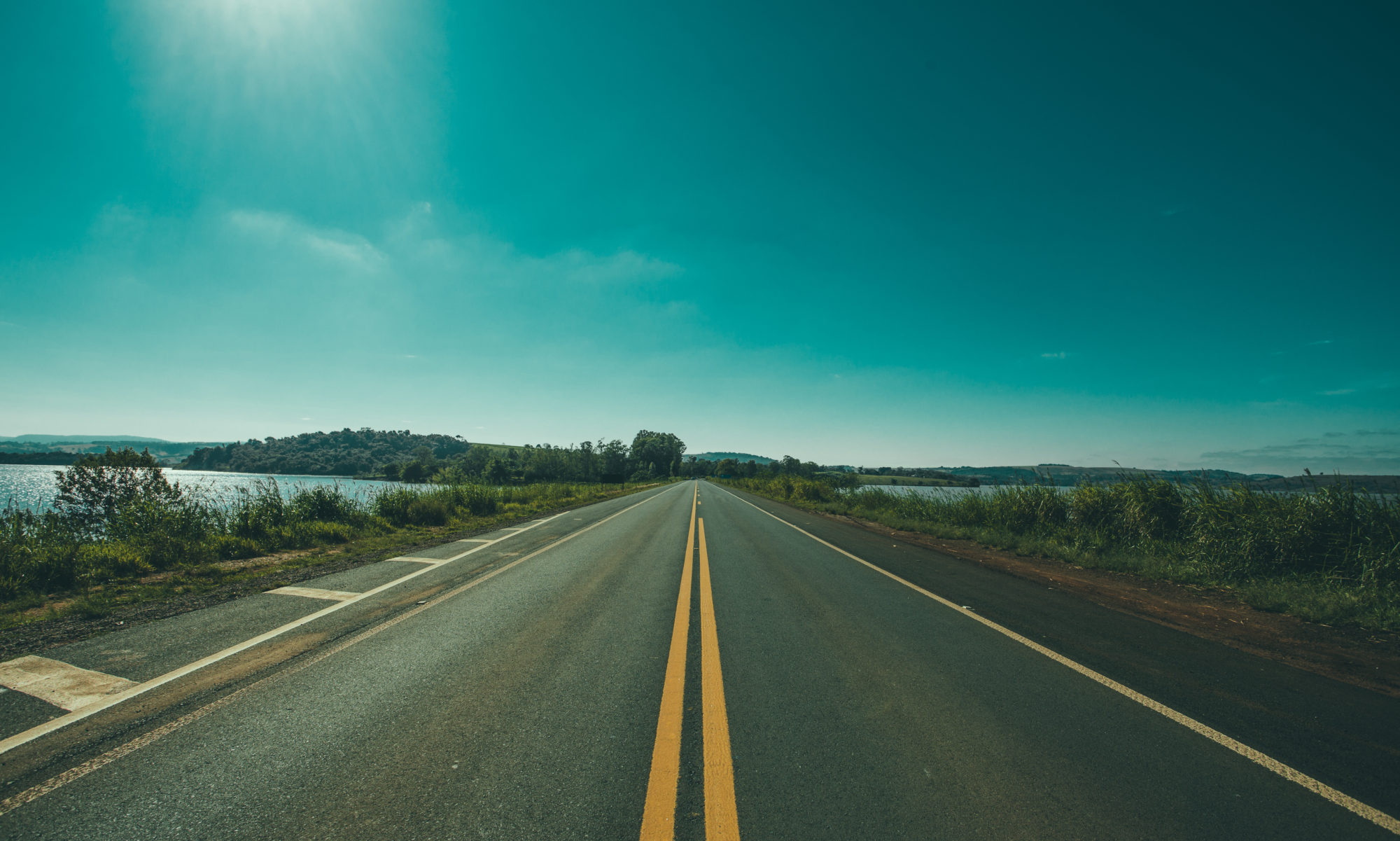From Isfahan, we fly to Mashad on a McDonnell Douglas aircraft that was built in 1994. I can’t remember the last time I saw an MD civilian aircraft.
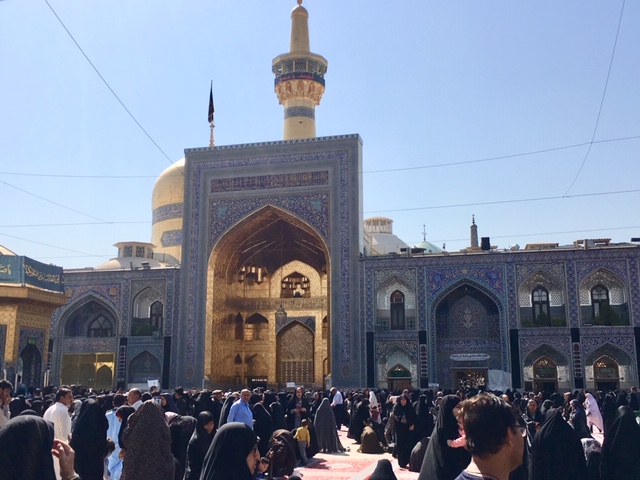
Mashad contains the Shrine of the Eighth Imam. Once again, Maria has to go full chador to enter.
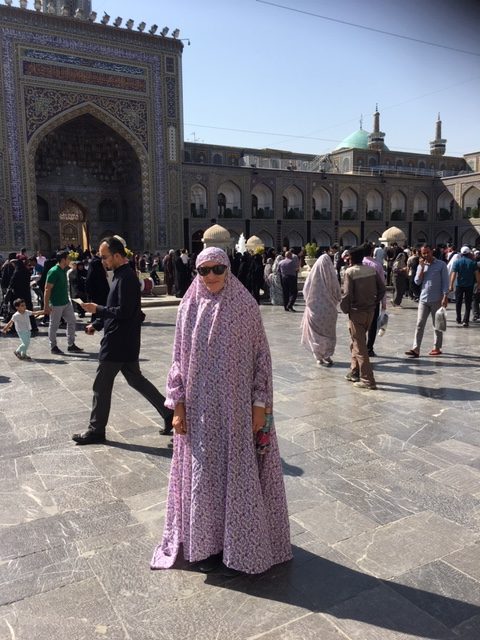
In nearby Tus, we visit the tomb of Ferdowsi.
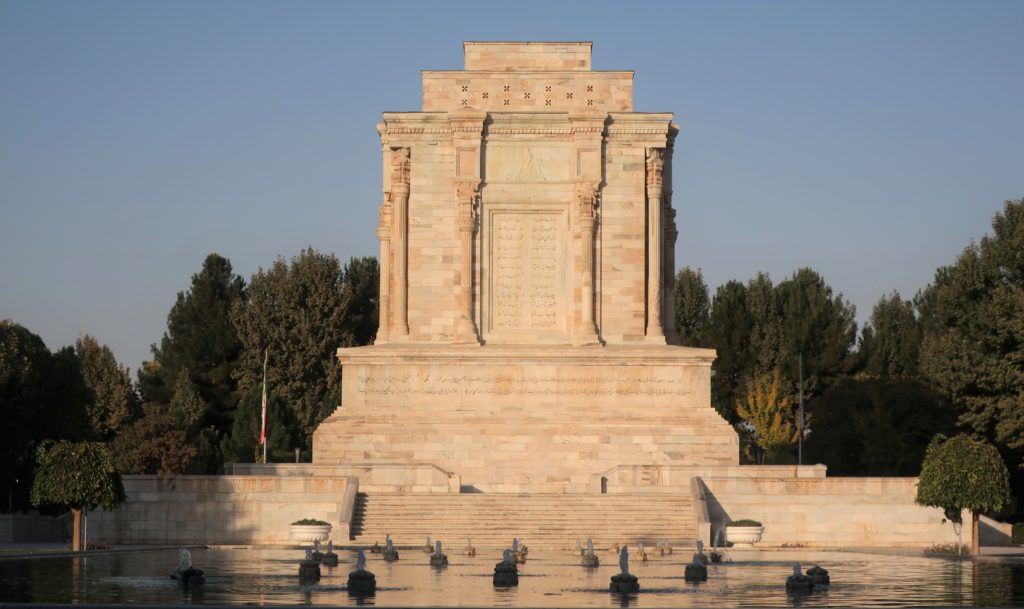
Ferdowsi’s work means a lot to Iranians. At a time when Arabic was in the ascendant, he’s seen as a major bulwark in the preservation of the Persian language.
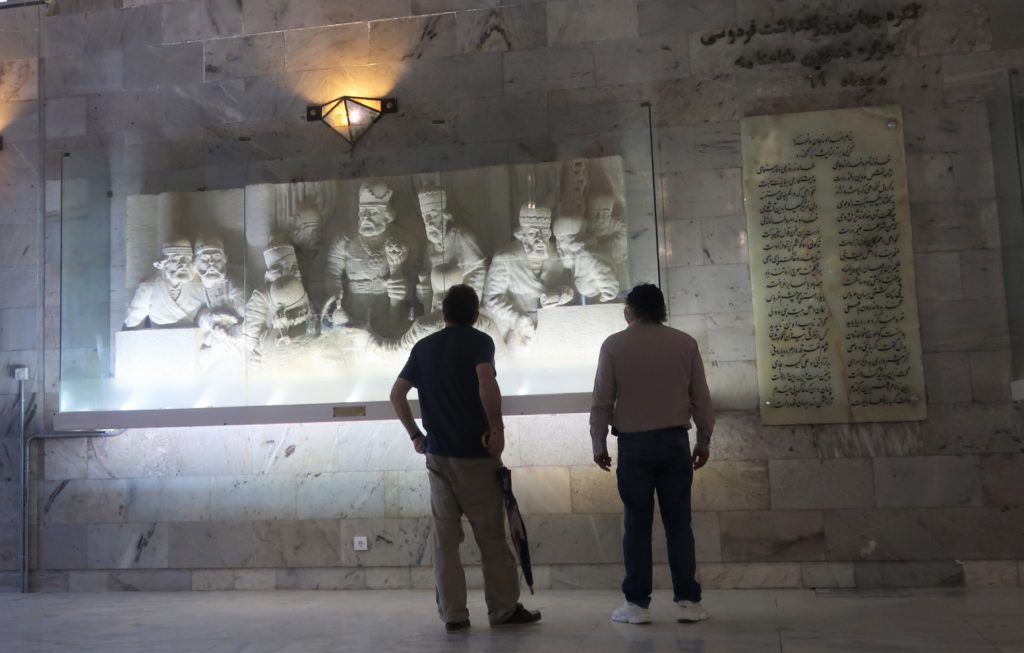
As is usual here, the tomb is surrounded by beautiful, well-kept gardens.
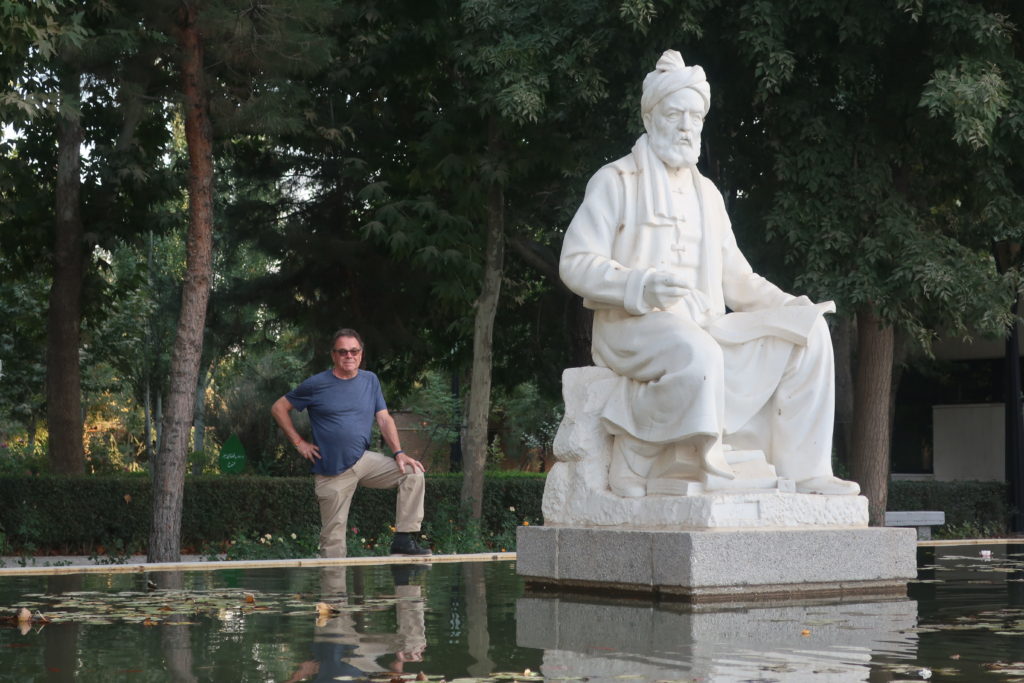
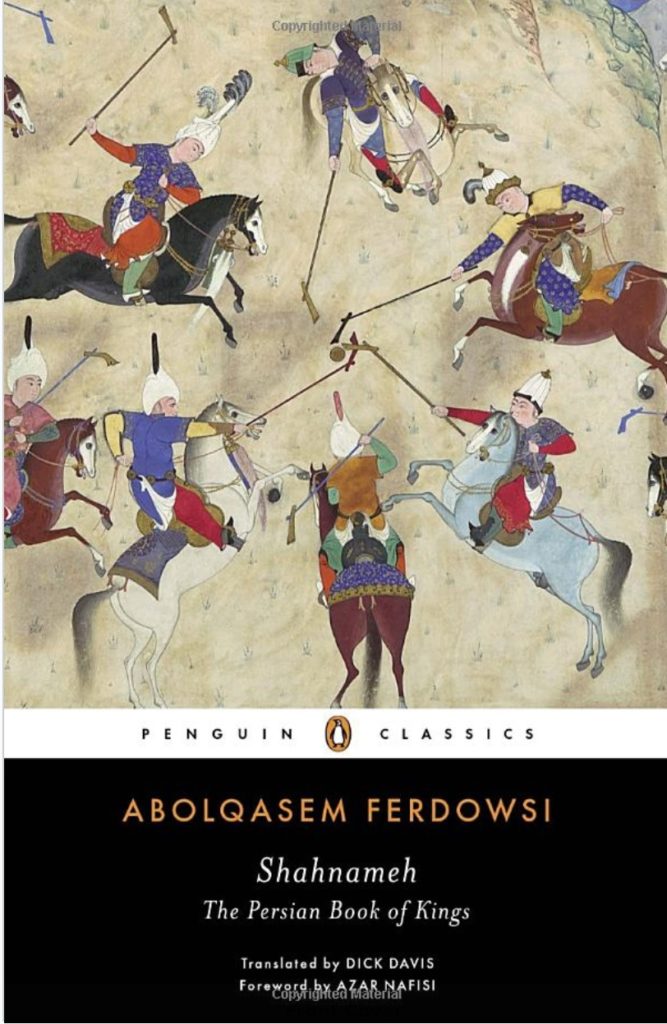
Next we visit Nishapur. This was one of the greatest cities of the middle ages before the Mongols slaughtered everyone in town in 1221.
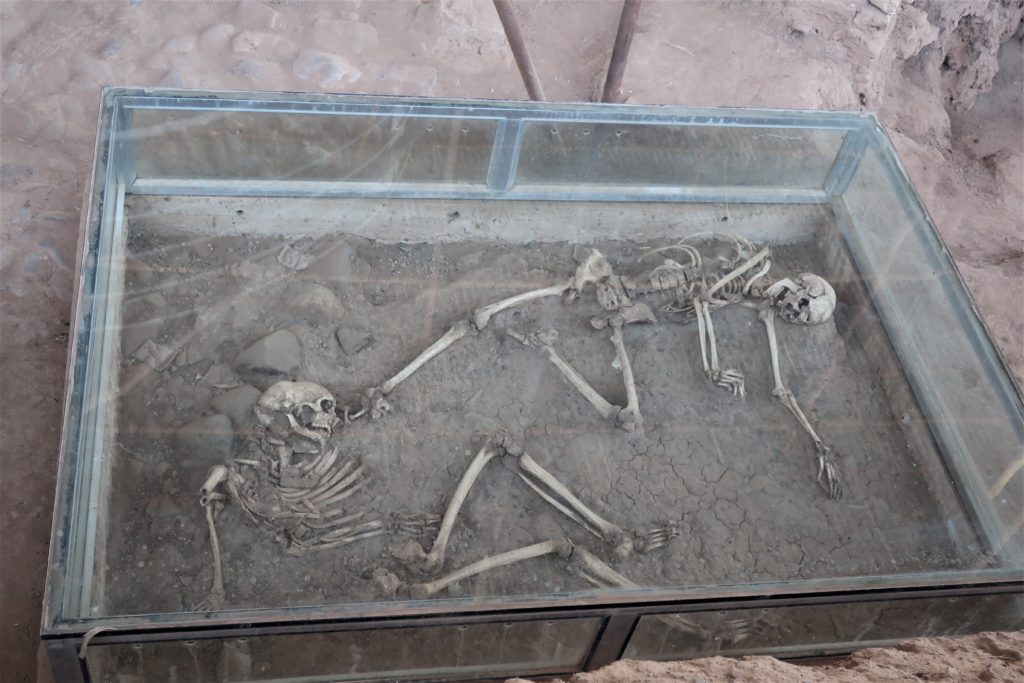
Part of the old town is being excavated.
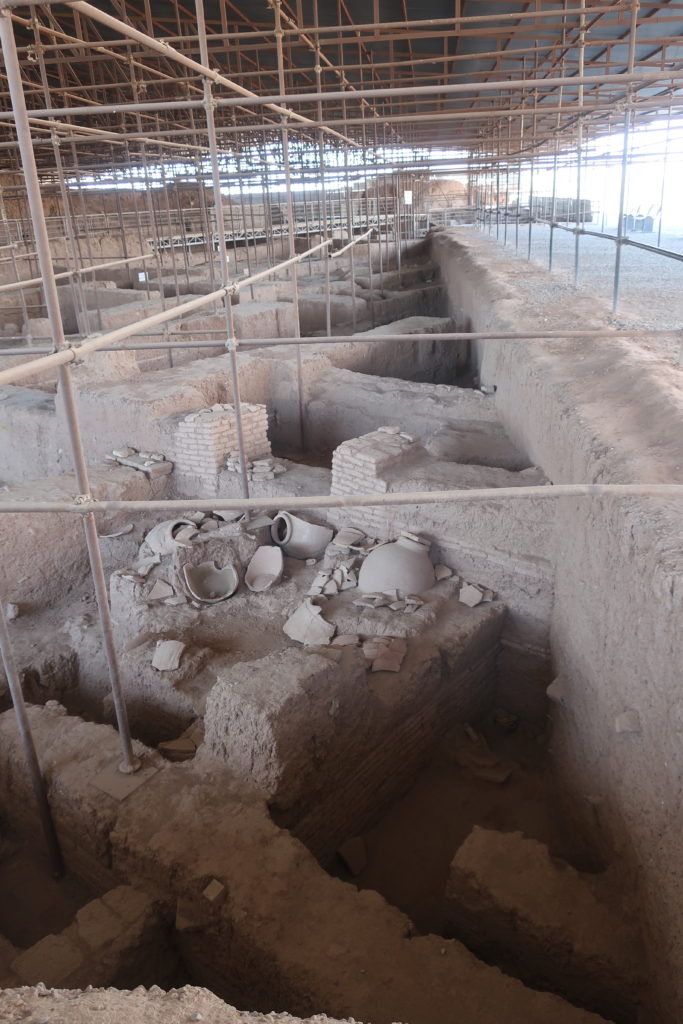
Our little band of travelers watch the sun go down at the edge of the Chahjam Desert.
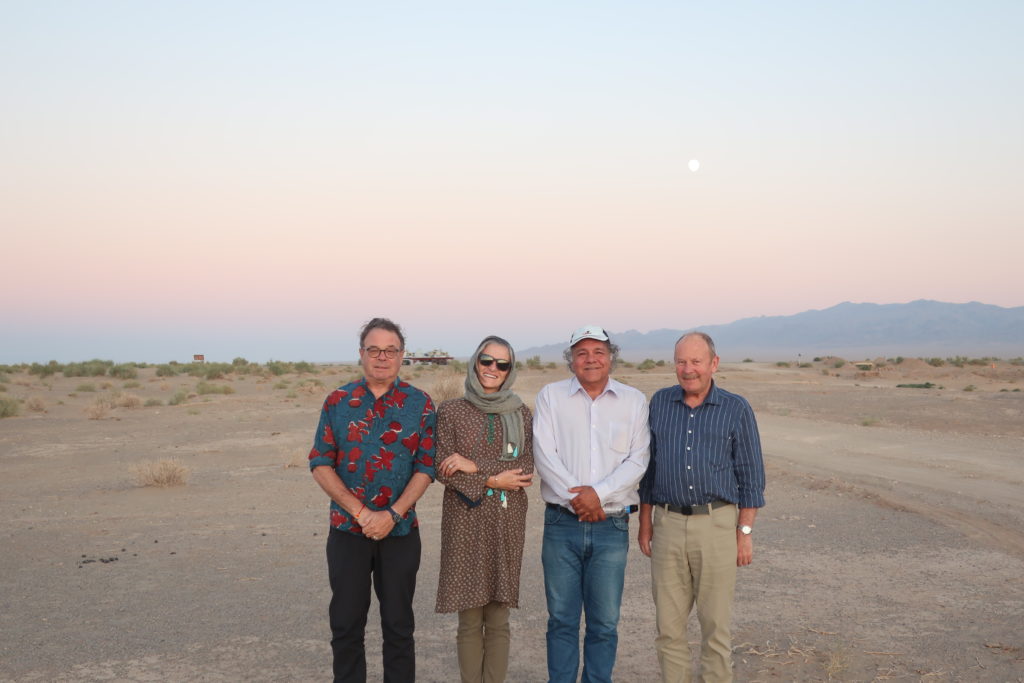
A herd of camels crosses our path.


After a night in Shahrud, we visit the shrine of Bayazid Bastami, another Sufi mystic.
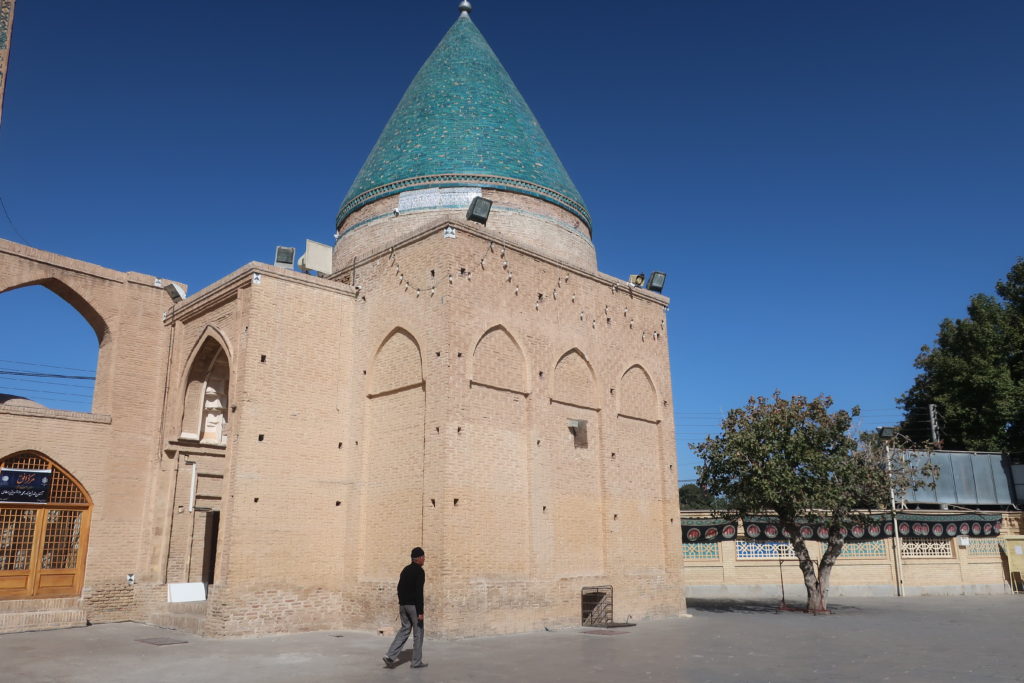
People come here to pray.
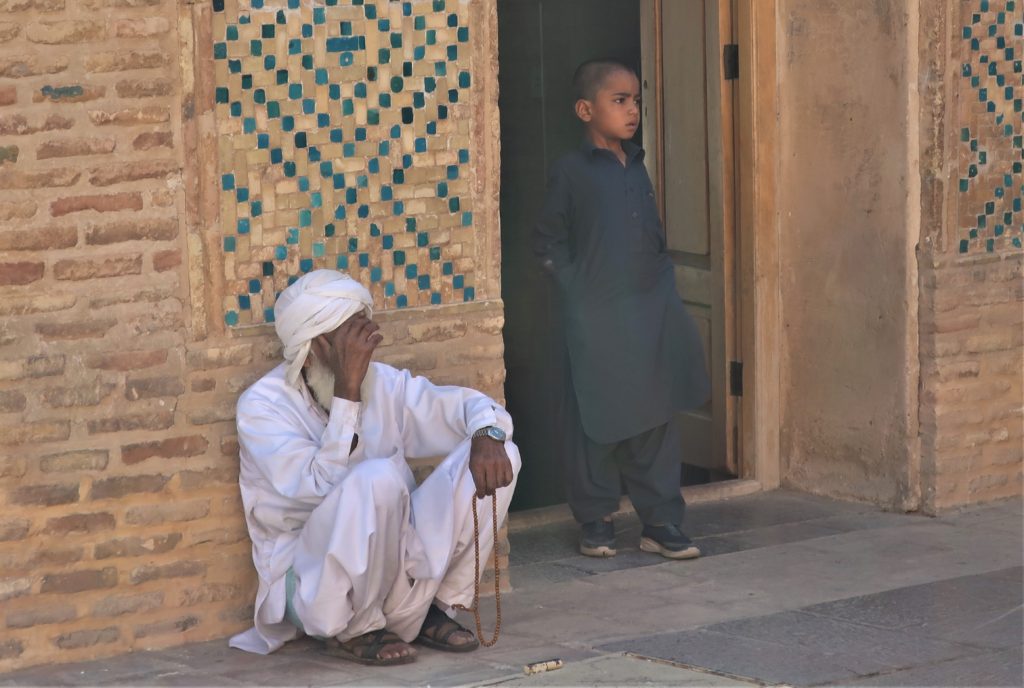
Sheep wandering on the road are an occasional hazard.
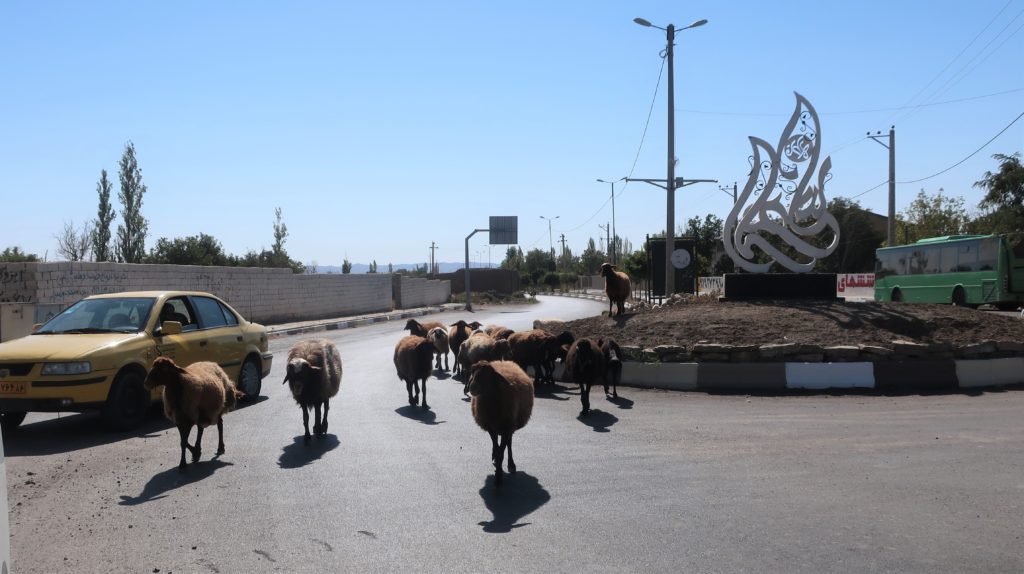
Another nearby shrine is that of Abul Hassan Kharaqani, another Sufi master. Must be something in the water around here.
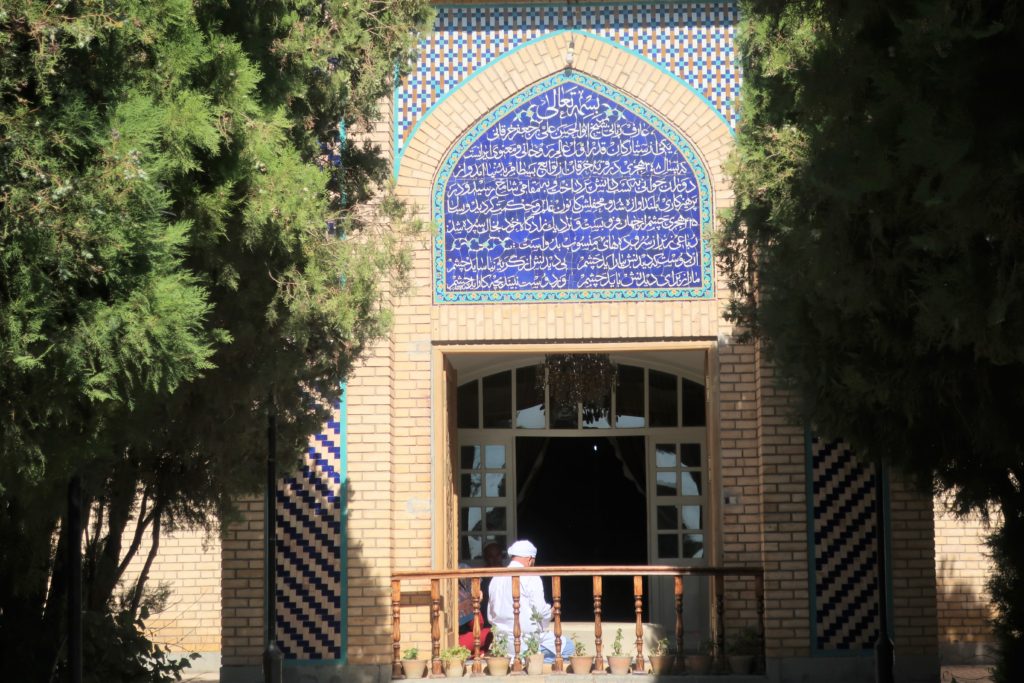
The tomb is surrounded by beautiful carpets and plants.
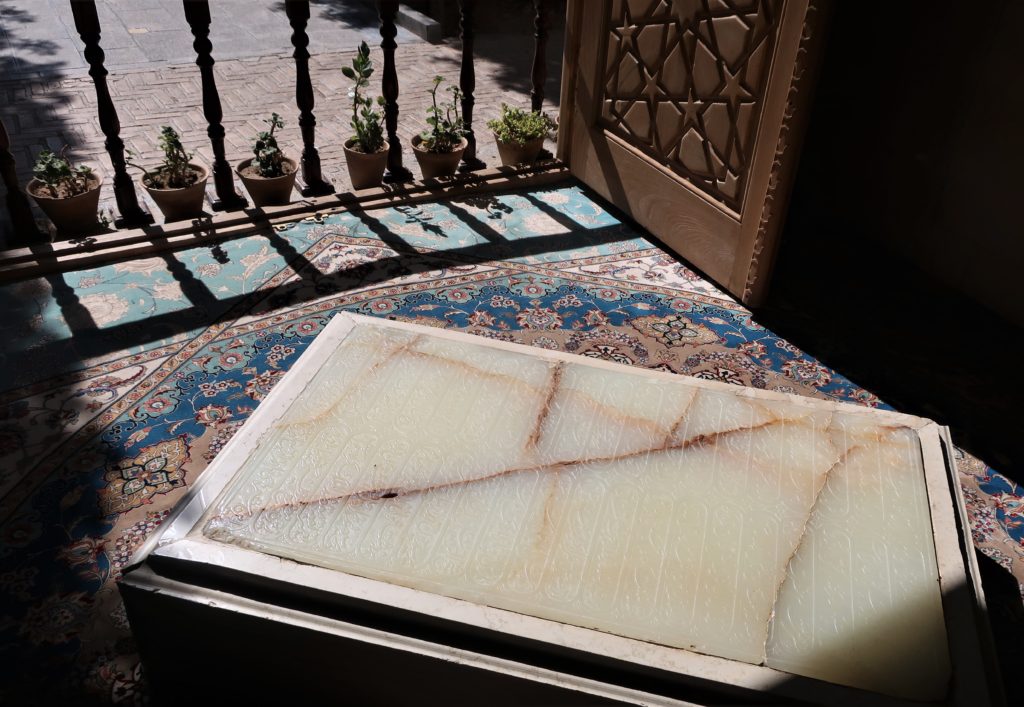
A four-wheel-drive vehicles takes us to the Abr Forest. We’re more impressed with the rocky hills than the forest.
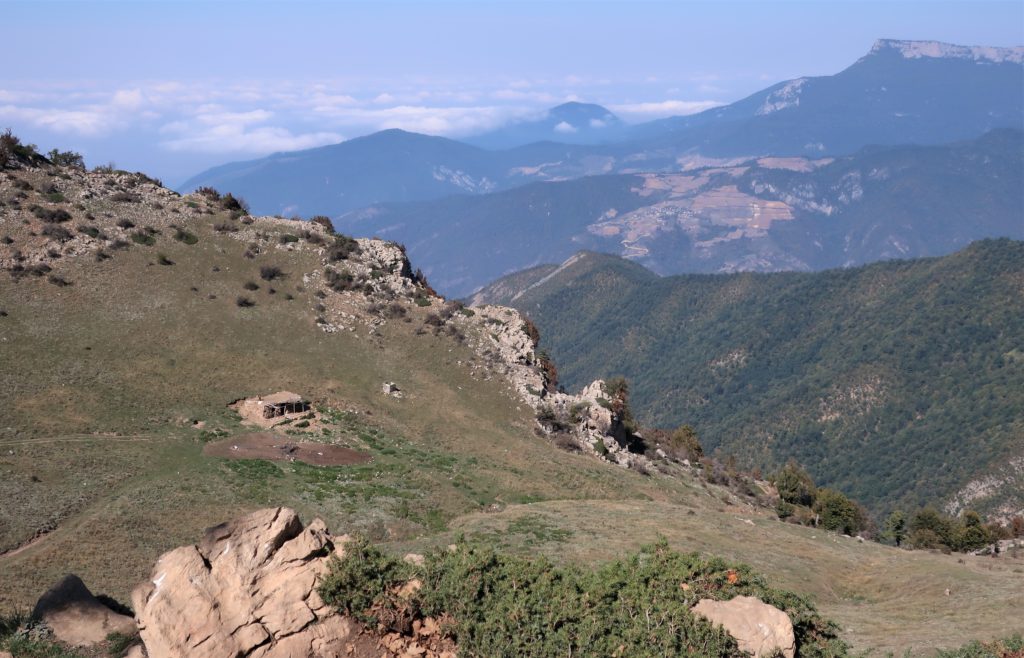
Our 4WD driver insists on a group photo. We acquiesce.
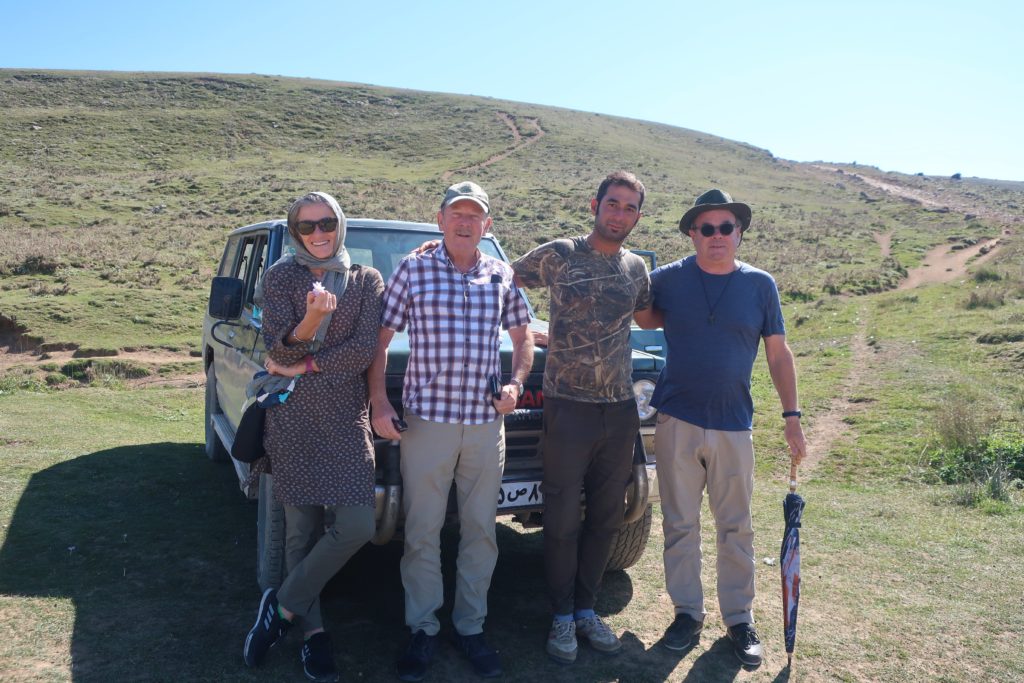
Apparently, this is where saffron comes from. (I can’t vouch for the truth of this.) Iran is the largest producer of saffron in the world. (This is true.)
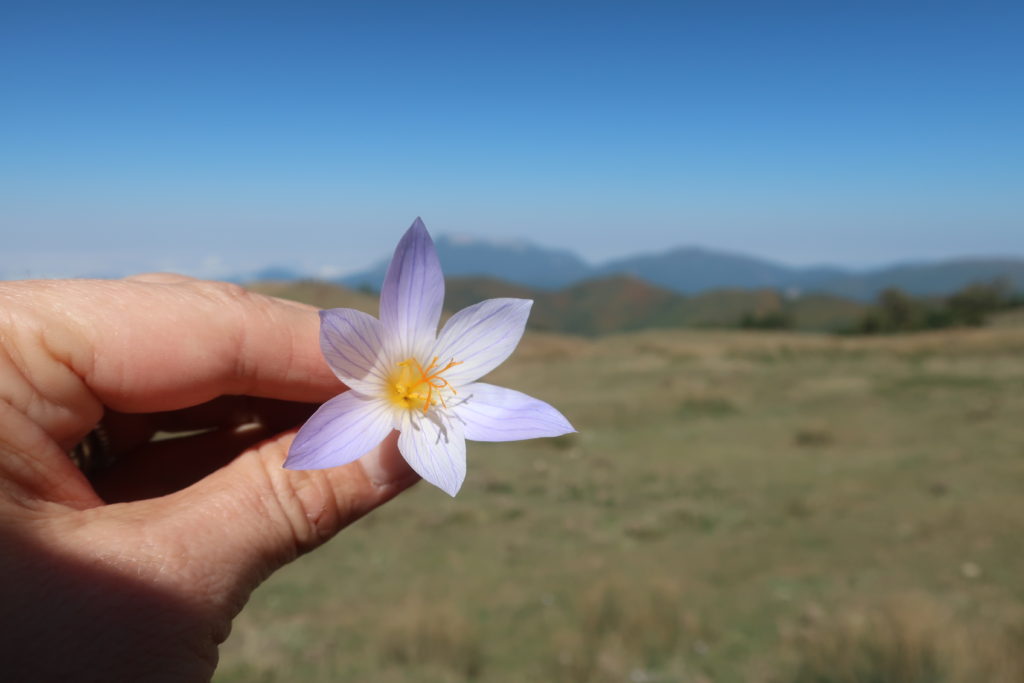
There are many oaks up here, stunted by the wind.
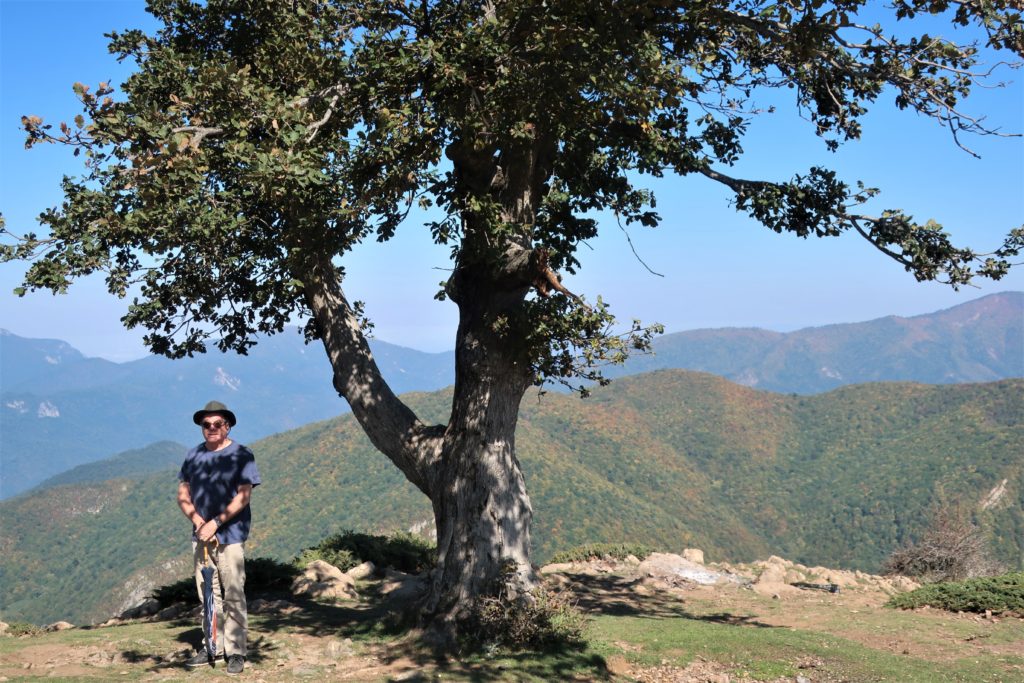
The next day dawns cold, windy, and rainy. We take a small motorboat out to an island in the Caspian Sea. On the island is a factory that processes caviar and sturgeon.
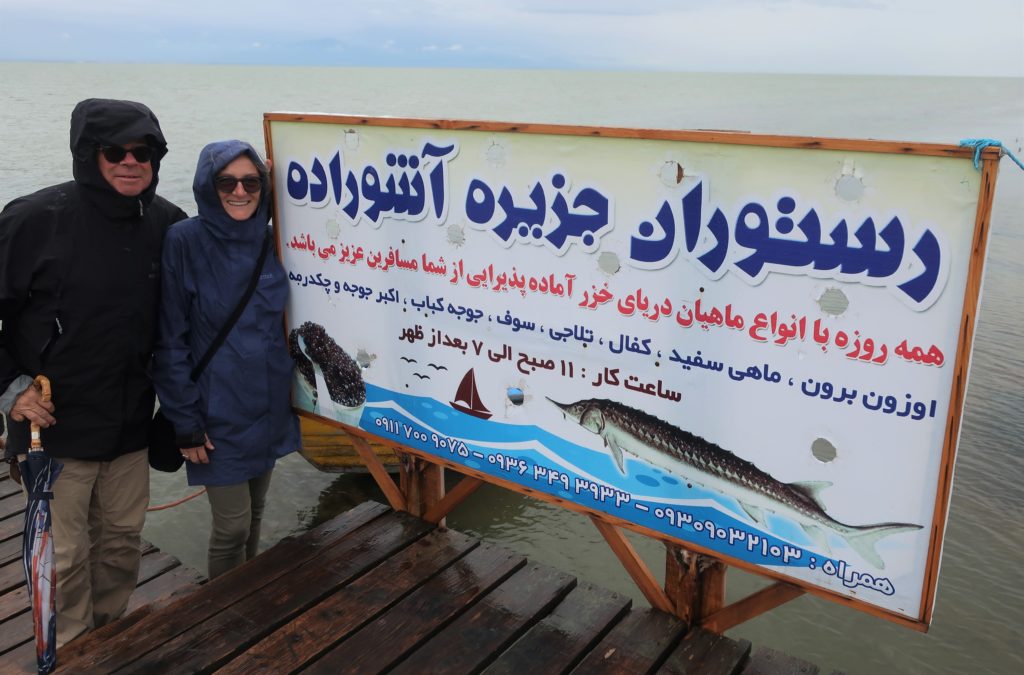
We fly from Gorgan back to Tehran. Next morning, our first stop is the superb Carpet Museum of Iran.

We are struck dumb by the beauty and skill of these carpets. Some of them must contain a million individual knots.
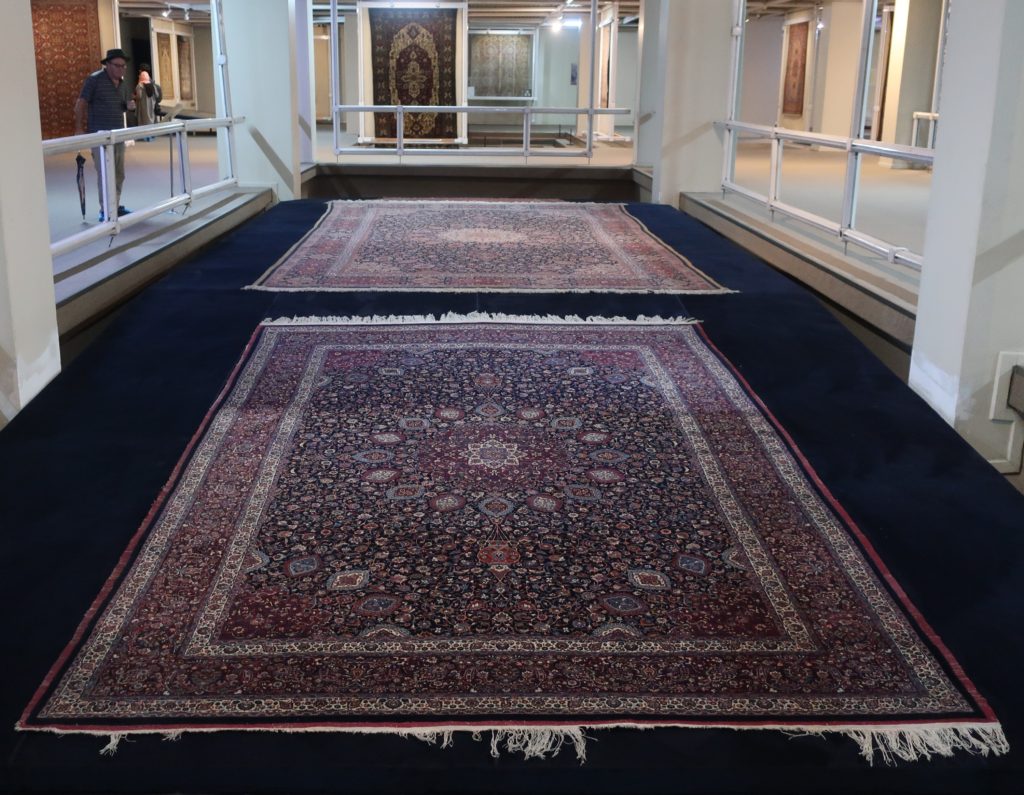
This may look like I’m practicing my bent-old-man-with-a-walking-stick look, but I am in fact examining details of this replica of the Pazyryk Rug.
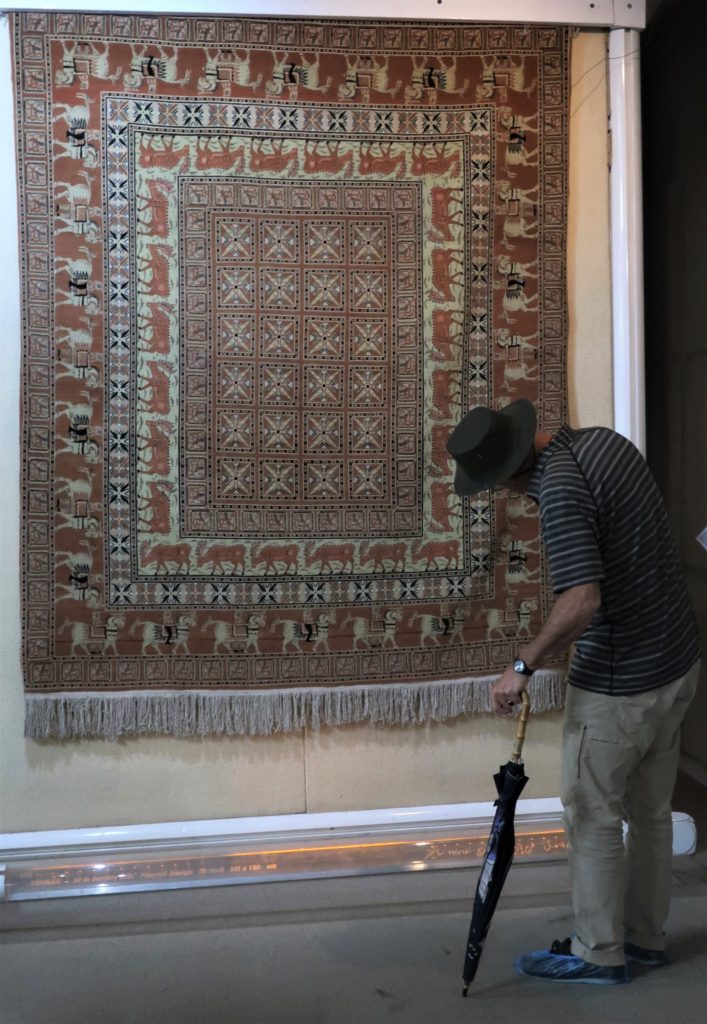
Our last stop before the airport is the Azadi Tower, Tehran’s chief landmark.
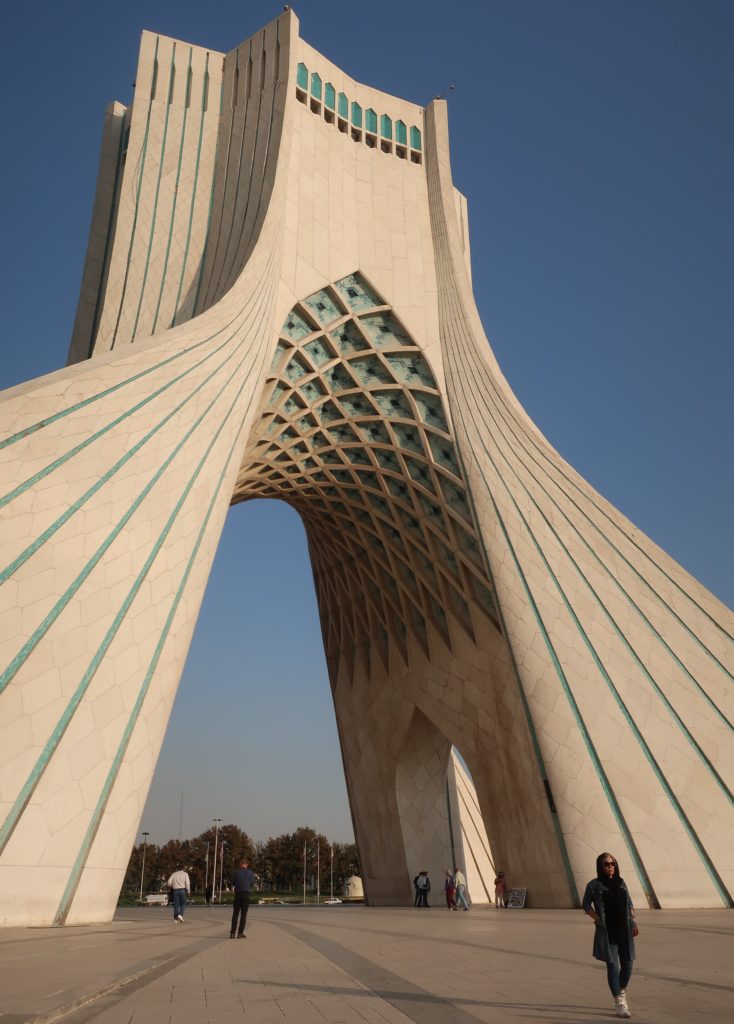
The architect, Hossein Amanat, is a Bahá’í and now lives in Canada after fleeing the new regime under threat of death.
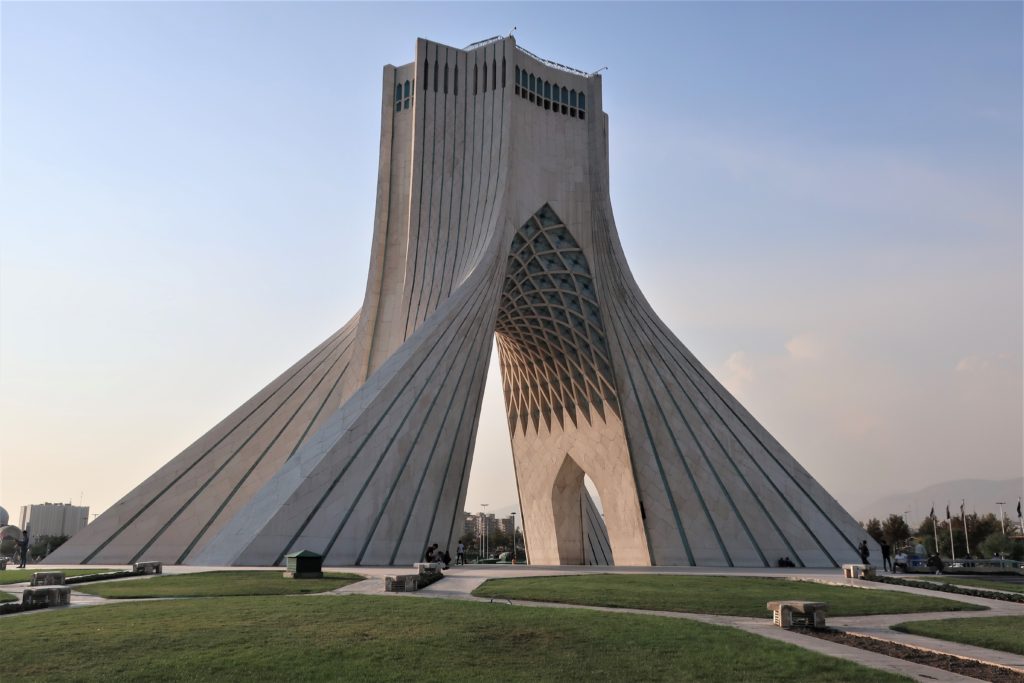
From the top, we take our last look at Tehran.
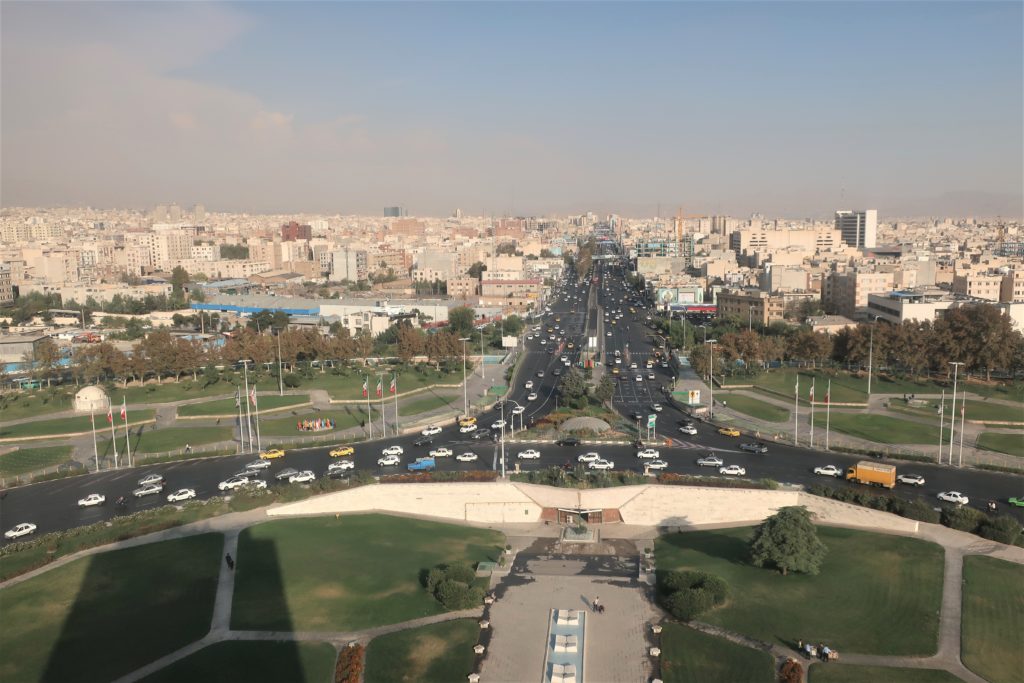
Eventually, it’s time to drive out to the airport.
Sight or Insight of the Day
We bid a sad goodbye to Saeed and Justin at Imam Khomeini Airport.
Three weeks goes by very fast. We have had a very special time here, exploring the country together.
Iran reminds me a lot of Chile in the 1980’s: Chileans are probably the friendliest, best-educated people in South America, yet they suffered under a brutal military dictatorship. I wondered at the time where they found the people to staff their torture cells: most people were so nice.
Iran is similar – a civilized, generous people being ruled by a handful of monstrous theocratic despots and their protectors, the Iranian equivalent of the SS: the Revolutionary Guard. Ruled by people who don’t care if the entire country suffers under sanctions, Hell-bent on acquiring nuclear weapons at any cost, for God-knows-what purpose. And don’t get us started on the crime-against-humanity that is the subjection of women under this unholy regime.
To counter the image that Iran has abroad, as a nation of terrorist-supporting maniacs, it’s a good thing to come here and experience the rich history and beautiful landscape and startling honesty of the Iranian people. (In contrast, in our first day back in Delhi when out running some short errands, Maria is cheated, short-changed, and overcharged five times in the space of one hour.)
And this is despite the grotesque propaganda that is the sole offering on most Iranian media. Foreigners are often portrayed as – at the very least – ‘evil’ (and Israelis as positively Satanic). We have the best of wishes for the future of the Iranian people. Thanks for your warm hospitality.
